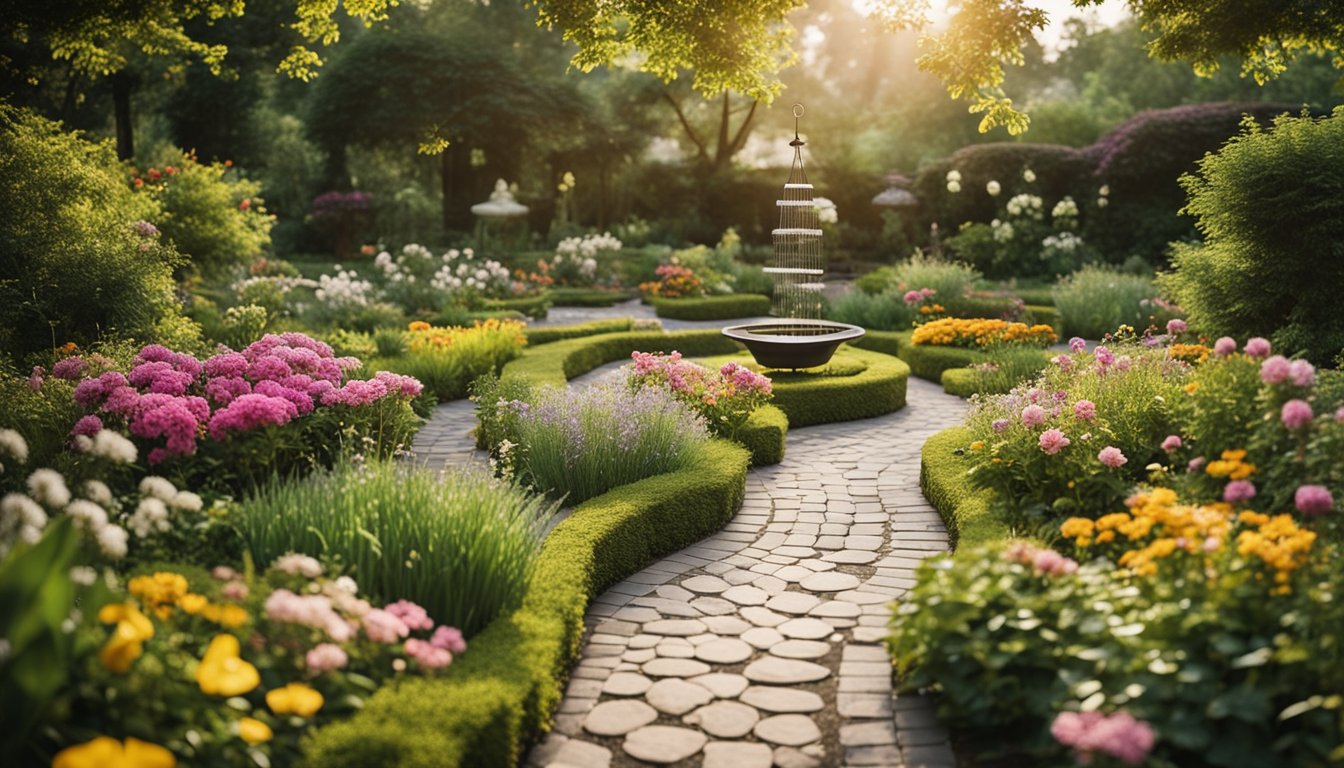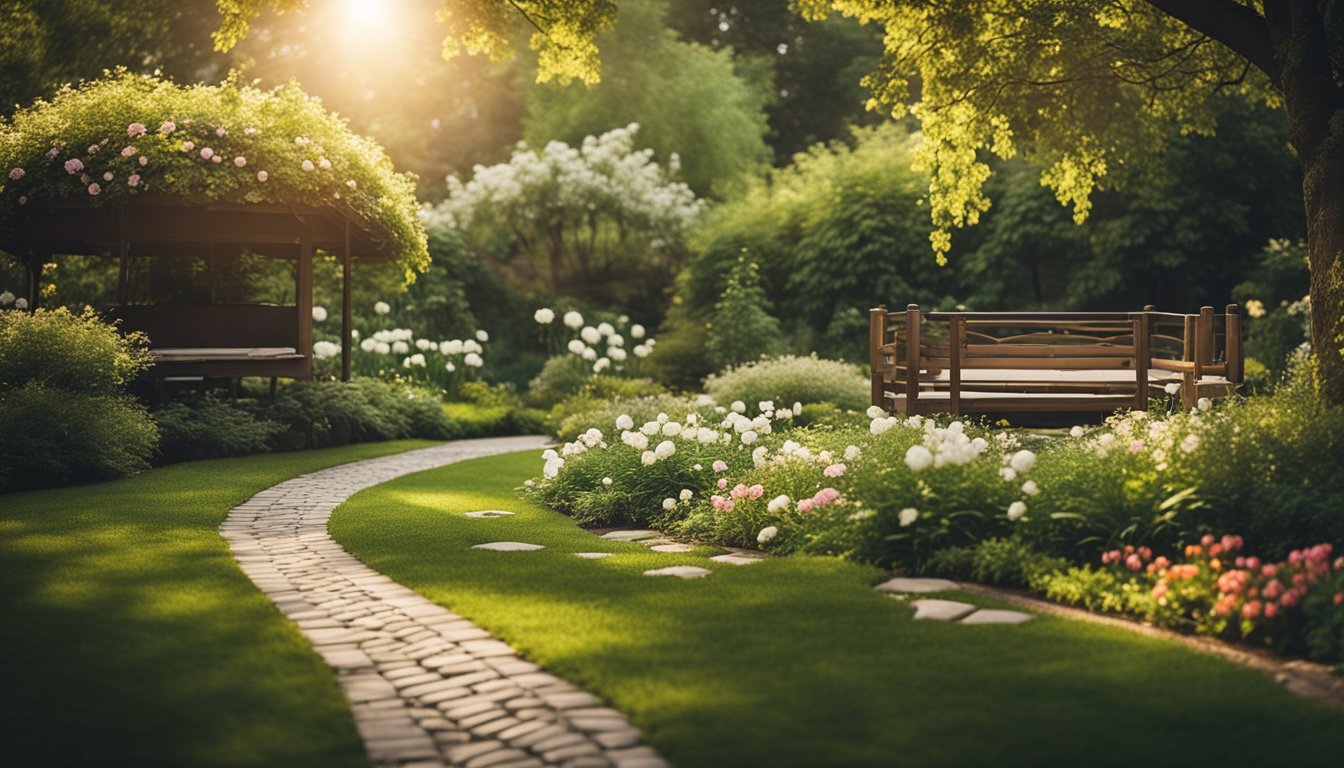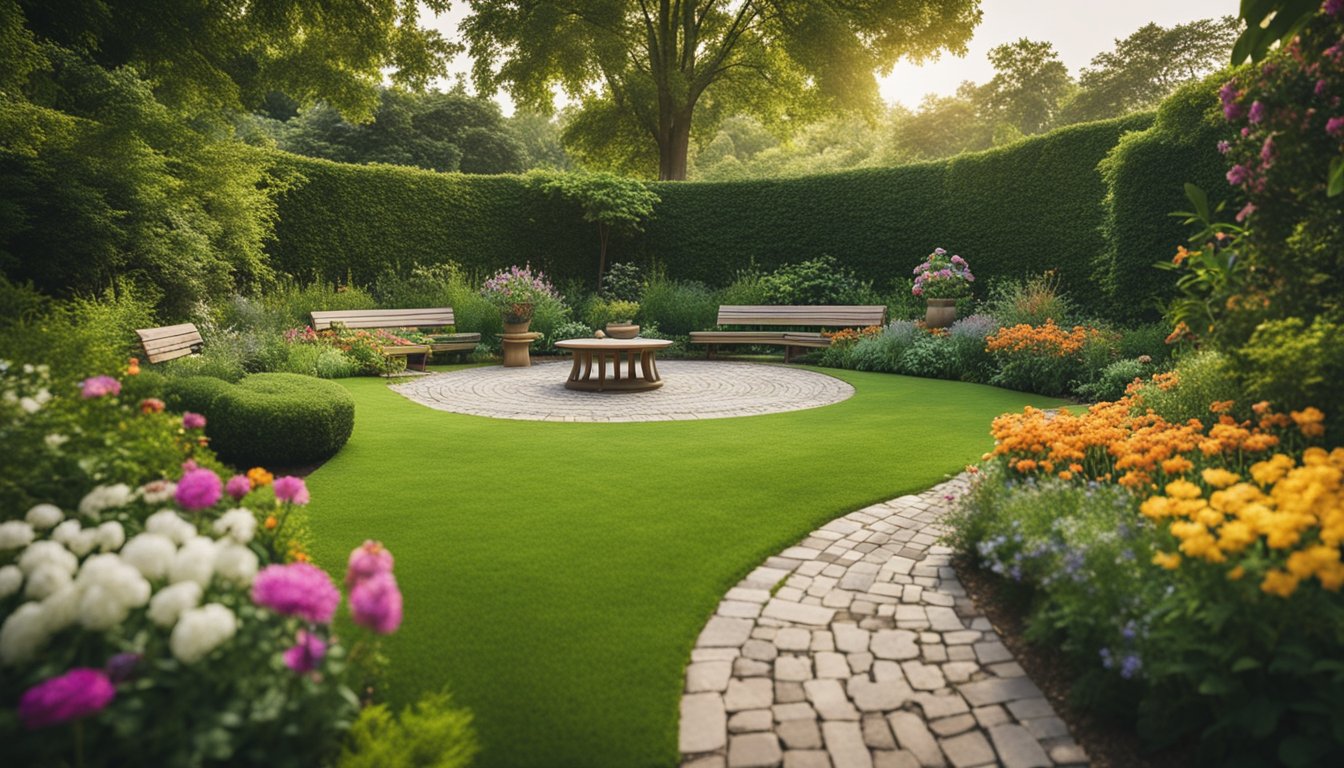Late updated: 27 Mar 2025 15:03
Written by: James Whitaker
Creating A Nature-Inspired Garden Relaxation Spot: Tips for a Serene Retreat
Imagine stepping into your garden and feeling a wave of serenity wash over you. Such a peaceful retreat is within reach by crafting your own nature-inspired relaxation haven. A meditation garden uses thoughtful design elements like soothing water features, colourful flora, and natural materials to promote relaxation and mental well-being. By blending your personal tastes with proven design principles, we can create an oasis that will inspire calm and tranquility.

Design is essential when setting up an outdoor space tailored to relaxation. Selecting a mix of vibrant perennials alongside evergreen plants will maintain visual interest throughout the seasons. Organic paths, framed by lush greenery, will guide us through this calming environment, while deliberate focal points like garden statues and water features enhance the atmosphere of mindfulness and peace.
The magic lies in transforming everyday spaces into tranquil sanctuaries. A thoughtfully constructed garden can offer more than aesthetic pleasure; it serves as a refuge for mental health, encouraging mindfulness and alleviating stress. Let us explore the steps and inspiration necessary to bring this vision into reality, creating a personal haven that rejuvenates and refreshes.
Key Takeaways
- Design a relaxing garden using vibrant plants and soothing features
- Establish focal points to enhance mindfulness and tranquillity
- Transform outdoor spaces for mental well-being and stress relief
Designing Your Garden Retreat
Designing a garden retreat involves selecting natural materials, thoughtful colour choices, and planting fragrant species. This combination not only enhances the visual appeal but also creates a peaceful and calming environment.
Incorporating Natural Elements
Incorporating natural elements into our garden brings us closer to nature, enhancing the sense of serenity. Using local stone and native plants provides an authentic look. Wooden benches or wicker furniture offer aesthetic seating areas, while water features add soothing sounds. Mulch made from bark or wood chips can help to integrate paths naturally with the garden surroundings. Natural materials like these not only improve aesthetics but also create harmony in our retreat.
Selecting Colour Palettes and Textures
The right colour palette and textures can greatly influence the mood of our garden retreat. Soft, neutral tones such as pastel greens, gentle blues, and earthy browns are ideal for promoting tranquillity. Introducing textures through materials like rough stone, smooth pebbles, and rustic wood adds depth and interest. Contrasting textures, such as soft moss against a robust stone, create visual appeal. By carefully selecting colours and textures, our garden attains a balanced and peaceful presence.
Choosing Plants for Serenity and Fragrance
Selecting plants with calming fragrances is essential to a relaxing garden retreat. Lavender and rosemary are celebrated for their soothing scents. Incorporating these with shade-loving ferns, shade trees, and evergreen shrubs provides greenery and structure. Plants like jasmine and thyme also add a delightful aroma to the air. Our garden benefits from year-round interest and fragrance, enhancing a meditative and serene atmosphere.
Creating Focal Points for Relaxation

Designing a garden relaxation spot requires thoughtfully planned focal points. By integrating water features, distinctive structures, and comfortable furnishings, we can establish a serene atmosphere tailored for enjoyment and rejuvenation.
Adding Water Features for Tranquillity
Water features such as fountains, ponds, or waterfalls can transform a typical garden into a tranquil oasis. These elements provide both visual appeal and the soothing sound of flowing water. Incorporating a small pond at the centre of the garden invites wildlife, adding to its natural charm.
A water fountain near a seating area serves both as a visual centrepiece and an acoustic shield, diminishing external noise. Attention should be given to the scale of water features, ensuring they fit the garden’s overall layout. It’s crucial to maintain these features, as clean water enhances the serene atmosphere and encourages a sense of peace.
Structuring Spaces with Pergolas and Gazebos
Pergolas and gazebos offer essential structures in creating focal points within our garden retreat. They define spaces, creating shaded areas perfect for relaxation or social gatherings. A pergola situated near a pond can create an inviting enclosure, framed with climbing plants for added aesthetic appeal.
Gazebos provide shelter and can serve as an intimate space for reflection. Furnishing these structures with comfortable seating allows for extended enjoyment of the garden’s peaceful environment. We should consider the placement of these elements carefully to maintain openness while enhancing the garden’s architecture.
Crafting Comfort with Outdoor Furniture
Outdoor furniture is key to fostering comfort and inviting relaxation. Selecting durable and weather-resistant materials ensures that furniture remains beautiful through changing seasons. Strategically placing chairs and benches near focal points, such as a water feature or under a pergola, encourages lingering moments of peace.
Incorporating a fire pit within the seating area adds warmth, extending garden use into cooler evenings. Cushions and throws provide added luxury, ensuring comfort as we unwind in our tranquil oasis. By choosing neutral tones and natural materials, we seamlessly blend these elements with the natural surroundings, enriching the garden’s harmony.
Frequently Asked Questions

Creating a nature-inspired garden relaxation spot involves careful planning and consideration of various design elements. We focus on essential components such as meditation garden design, plant selection, and creating tranquil environments to ensure a serene space.
What considerations should be taken into account when designing a small meditation garden?
In a limited area, it's crucial to optimise space while maintaining a sense of openness. Paths should encourage slow, reflective walks. Selecting compact elements like small fountains and discreet seating areas can maintain a peaceful atmosphere.
Which elements are essential for creating a tranquil and relaxing garden space?
Water features, such as small ponds or fountains, introduce calming water sounds. Thoughtfully chosen seating areas, along with natural materials like rocks or bamboo, contribute to a harmonious environment. Lighting can be used softly to highlight paths without overwhelming the senses.
Could you provide guidance on the selection of plants for a meditation garden?
Choose plants known for soothing colours and textures. Lavender and jasmine offer calming fragrances, while ornamental grasses provide a gentle, rustling sound in the breeze. It's wise to include a mix of evergreens and seasonal flowers for year-round interest.
What are the fundamental principles to follow when planning a Zen garden?
Zen gardens focus on simplicity and harmony. Use gravel or sand to represent water, and arrange rocks thoughtfully to symbolise mountains. Minimalistic plantings complement this, with each element placed with intention. Balance and proportion are key.
How can one develop a school peace garden that promotes serenity and reflection?
Incorporate interactive elements like peace poles or thoughtful quote plaques. Planting native species can encourage local biodiversity. Ensure paths and seating areas are welcoming and accessible, promoting an inclusive space for all students to enjoy and reflect.
What steps are involved in constructing a peaceful meditation garden?
Start with a clear design plan. Identify the main features to include, such as water elements or seating. Prepare the site, ensuring good drainage and a solid foundation for any structures. Gradually introduce plants and decor, maintaining a cohesive theme.
